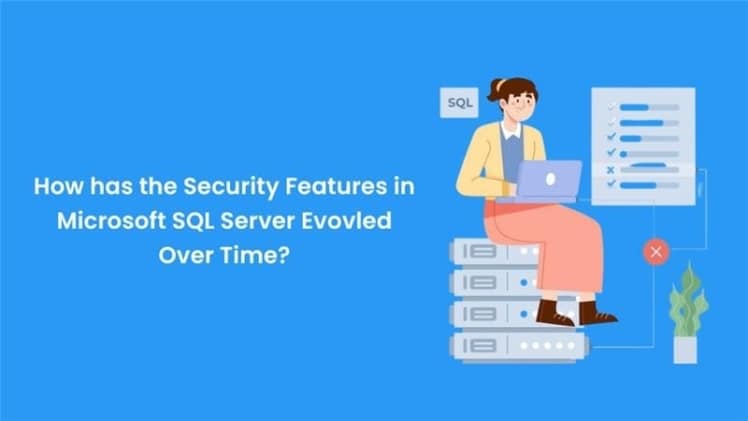Microsoft SQL Server History has led the field of database management systems, giving businesses a solid foundation on which to store, access, and manage their vital data. Microsoft SQL Server has developed continuously in response to the expanding cybersecurity issues organisations worldwide face. Microsoft has constantly improved SQL Server’s security features with a strong focus on data security to protect sensitive data from unauthorised access and maintain data integrity and confidentiality. We’ll go into the development of Microsoft SQL Server’s security features in this blog and explore how these developments have been essential to the field of SQL Certification.
Early Beginnings of Microsoft SQL Server
In 1989, Microsoft and Sybase collaborated to launch Microsoft SQL Server. SQL Server initially provided fundamental security capabilities like user authentication and authorisation. However, These early security solutions quickly showed themselves unable to fulfil the expanding expectations of the corporate sector due to the internet’s rapid spread and the rising dangers to data protection.
Milestones in SQL Server Security
As SQL Server developed, Microsoft added numerous ground-breaking features in response to the growing security issues. The encryption capabilities of SQL Server 2000 were enhanced, providing data security while it is at rest and in transit. With the advent of native XML support and improved auditing capabilities with the release of SQL Server 2005, businesses could track and keep tabs on database access and modifications.
Microsoft introduced Transparent Data Encryption (TDE), a ground-breaking technology that automatically encrypts backups, log files and data files, with SQL Server 2008. This breakthrough increased the standard for data security dramatically, particularly for companies managing sensitive consumer and financial data.
Emphasis on Authentication and Authorisation
Microsoft SQL Server has given improving authentication and authorisation procedures much attention throughout the years. With the introduction of confined databases in SQL Server 2012, administrators were able to limit user access to a single database and reduce the possibility of unauthorised access to other databases on the server. User-defined server roles were also added, enabling improved management and fine-grained authorisation management.
Fortifying Against SQL Injection
In the early 2000s, SQL injection attacks gained substantial attention. By adding parameterised queries and stored procedures, Microsoft solved this problem and reduced the possibility of SQL injection problems. With the help of these security measures, SQL Server’s resistance to hostile assaults was greatly strengthened, and applications were protected from potential data breaches.
Advancements in Auditing and Compliance
The auditing capabilities of SQL Server advanced as data privacy laws tightened. To ensure that only the programme may access plaintext data, SQL Server 2016 introduces the ground-breaking feature “Always Encrypted,” which allows the encryption of sensitive data within the application itself. Due to this capability, businesses could comply with tight data protection rules and regulations.
SQL Server’s Journey to SQL Certification
Professionals in the database administration industry have to adjust and pick up the necessary skills to stay up with the changing security features with each new release of Microsoft SQL Server. This led to the demand for SQL certification programs, which attest to a person’s proficiency and comprehension of the most recent SQL Server security procedures. In addition to demonstrating competence in safeguarding SQL Server installations, SQL certification assists professionals in remaining relevant in a technical world that is continually evolving.
Conclusion
The development of Microsoft SQL Server throughout time demonstrates its dedication to data security and safeguarding sensitive information. SQL Server has consistently worked to avoid security concerns from its early days with simple authentication by introducing ground-breaking capabilities like Always Encrypted. This commitment has not only given organisations a trustworthy and safe database management system but also sparked the development of SQL certification programmes, allowing specialists to show off their knowledge of the always-changing field of SQL Server security. Since data is still a valuable resource in the digital era, Microsoft SQL Server’s security features must continue to advance if sensitive data is to be protected and the confidence of users and organisations worldwide is to be upheld.

